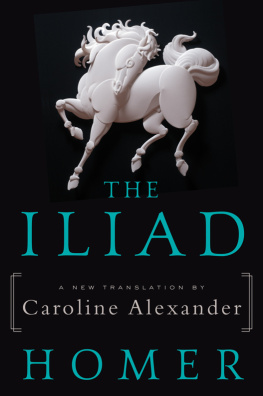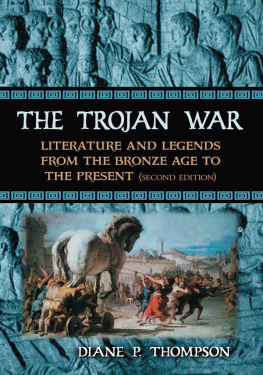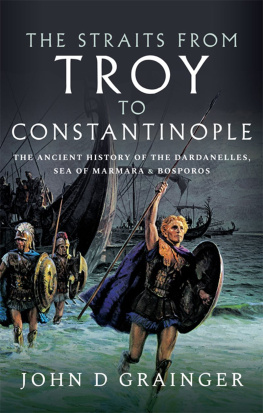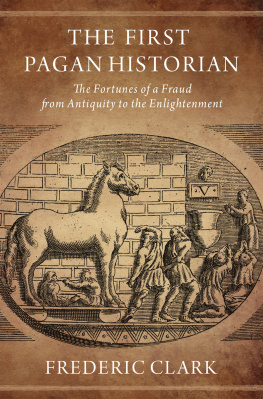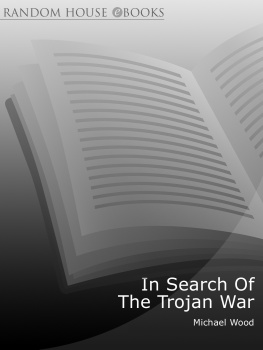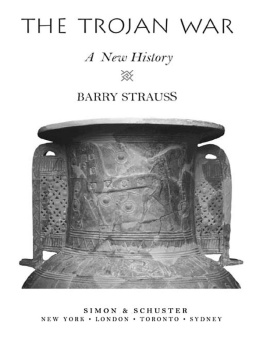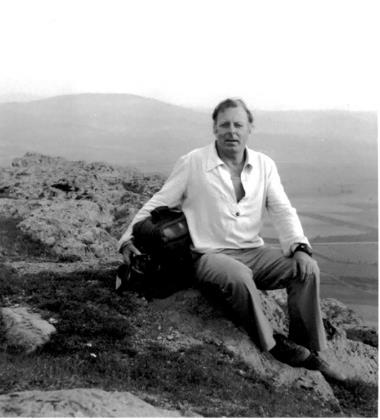SPELLING: For the Roman poet, Publius Vergilius Maro (70-19 B.C.), I use Vergil, although it is usually spelled Virgil in English. A mosaic panel, with his portrait head and his name spelled VERGILIUS MARO by Monnus of the fourth century C.E. (Christian Era), is in the Rhenish State Library at Trier, Germany.
I use Latin spellings for Greek names to the convention in English Classical studies. I use the Greek Pergamon instead of Latin Pergamum to the usage of the German archaeologists who have done so much work at Hisarlik and Pergamon.
In Turkish names, pronounce as English ch and as sh.
FRONT COVER PHOTOS: The west side of the acropolis of Pergamon from the town of Bergama, in Turkey, and from the Processional Way of the Asklepion.
Preface
The author used leisure during his sea career, for wide reading in ancient history. This interest and study continued to the present. Two important works, studied during his last voyage in 1952, prepared him to confront the questions of ancient history and see the need for reconstruction of its timetables. Emil Ludwigs exhaustive volume, Egypt, led him to read the pioneering work, Ages in Chaos, by Immanuel Velikovsky (1895-1979), and follow his lead.
He took up a full-time course in architecture in 1952. Attempting an essay on the development of Greek architecture, he found bewildering anomalies in the history of Mycenae and Crete. As architect for alterations to the Provisional Parliament House in Australias developing capital city of Canberra, in 1965, he noticed the works of Heinrich Schliemann (1822-1890) in the Parliamentary Library. Perhaps, some Australian politician took a lead from the interest of British Prime Minister William Ewart Gladstone (1809-1898) in Schliemanns discoveries. The volumes he took out on loan were Schliemanns Troy and its Remains, of 1875; Ilios, The City and Country of the Trojans, of 1881; and Troja, of 1882.
He became thoroughly dissatisfied with Hisarlik, near the Dardanelles, as the site of Troy, unable to believe that Homer had exaggerated so much. The problem continued to puzzle him. His reading broadened, to name a few, with Blegens Troy and the Trojans, Gladstones Homeric Synchronism, Lechevaliers Description of the Plain of Troy, McLarens Dissertation, and Mahaffys The Site and Antiquity of the Homeric Ilion.
He read the Geography of Roman writer, Strabo, that led Schliemann to investigate the region of the so-called Troad.
He read the criticisms made of the identification of Troy at Hisarlik, in Schliemanns own time. In 1882, the scholar, Sir R.C. Jebb, wrote that the collective opinion of intelligent antiquity rejected the claim of the Greek Ilium to occupy the site at Hisarlik. Jebb had a controversy with Professor J.P. Mahaffy, who had to argue that the alleged foundation of Ilion at Hisarlik in historical times is not true. To account for the later habitation levels found at Hisarlik, Mahaffy held that there had not been total and final destruction at Troy.
Jebb quoted Hellanicus and Demetrius of Scepsis against him, saying that ancient authors implied that the ruin was final and total that the site remained desolate. Jebb capped his argument against Mahaffy, with what the orator, Lycurgus, had said, about 332-330 B.C.: Who has not heard of Troy, how it became the greatest city of its time, the mistress of Asia, and how, since it was demolished once for all by the Greeks, it has been left uninhabited through the ages? We can see immediately that the small Troy, at the Hisarlik site, has never fitted this description by Lycurgus.
Alexander the Great (356-323 B.C.) visited the Greek Ilion at Hisarlik after the Battle of the Granicus (334 B.C.). Finding it inhabited, he gave it privileges and the title of a city. Therefore, Jebb held that Lycurgus, speaking a few years later, could not have overlooked the existence of the Greek Ilion at Hisarlik, and must have meant some other place.


